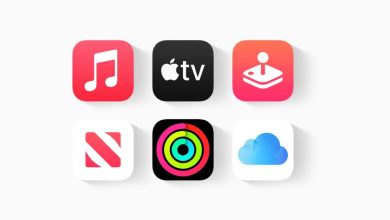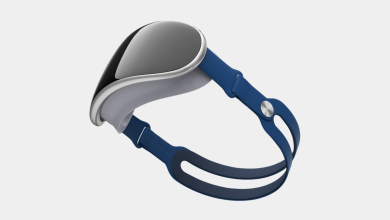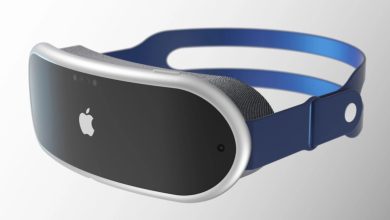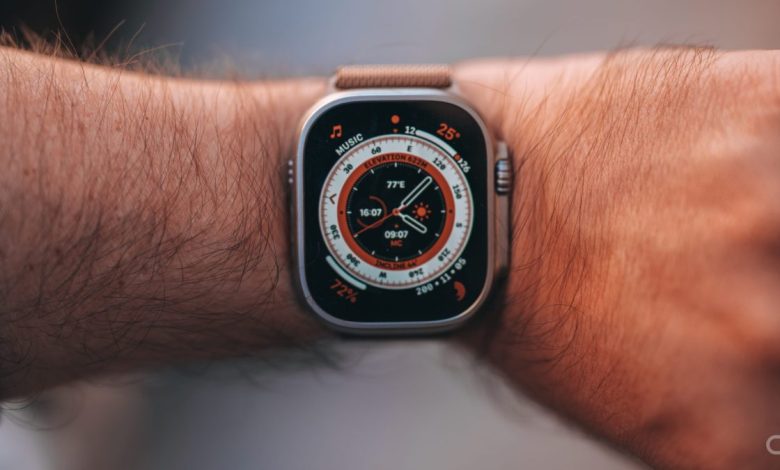
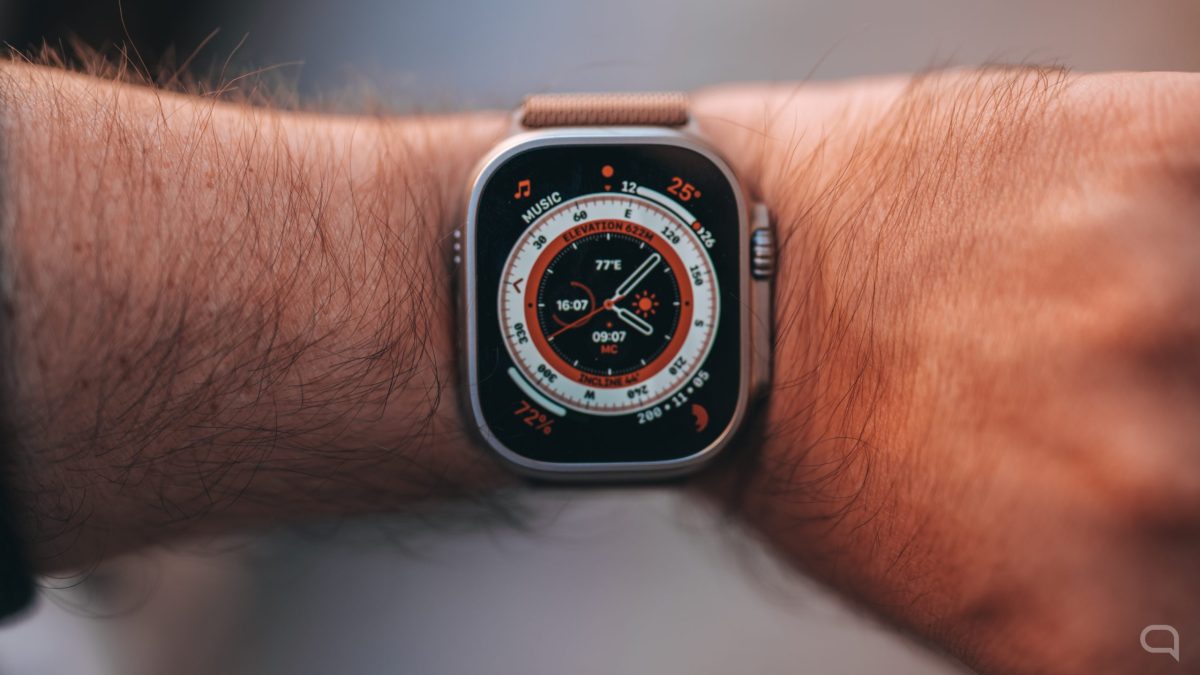 We can all agree that the Apple Watch Ultra is an outlier. It is the first significant redesign of the device in many years, and, at the same time, it is designed for a very particular use, very limited to sports—even somewhat extreme activities. The product’s marketing work is oriented to situations where a much more resistant device can be used, with more battery, with more buttons, where its considerably large size is not an impediment.
We can all agree that the Apple Watch Ultra is an outlier. It is the first significant redesign of the device in many years, and, at the same time, it is designed for a very particular use, very limited to sports—even somewhat extreme activities. The product’s marketing work is oriented to situations where a much more resistant device can be used, with more battery, with more buttons, where its considerably large size is not an impediment.
But any version of the Apple Watch is not designed only to be used when you play sports, regardless of whether it is extreme or anecdotal. The idea is always to have it on the wrist—either the Ultra or a “normal” version of the smartwatch.
I have lived with the Apple Watch Ultra on my arm for the past two weeks. I was doing all the normal activities of my life, including sports. No. I have not done a 42-kilometer trail running or signed up for a triathlon. I have not gone scuba diving, nor have I gone to a beach to swim 15 kilometers and test the smartwatch in extreme situations.
What I have done is continue my everyday life. Work, personal life, which, yes, includes sports. But in my terms, what did you do before you received the product for your review? I want to believe that we can embrace the use of devices without necessarily following Apple’s marketing department’s guidelines when it launches a new product.
But this analysis focuses on the product, its advantages, and the meaning of living an everyday life – and I insist, doing regular sports – with an Apple Watch Ultra. But later, we will publish a review focused solely on sports activities.

New design
Apple Watch Ultra is Apple’s first smartwatch with a completely new design. Some general lines are maintained like an iPhone is an iPhone, regardless of its generation. However, there are many changes, starting with the 49-millimeter screen, which significantly changes the relationship between the user and the device.
But what is most striking is that it is much broader. Enough to stop going unnoticed like the average Apple Watch. This one shows that you have it on your wrist, and —perhaps because of the novelty— the eyes are undoubtedly directed to your wrist.
The buttons are more significant, and the crown too. Bigger equals more comfort. Undoubtedly, Apple has made better use of the size of the Apple Watch Ultra case. The company recalls that part of the size change is related to the possibility of interacting with the Watch while wearing sports gloves.
In addition, the crown and the side button have a new design to protect both elements better. It is good in certain situations, but it has caused me problems in others.
If I do 90 degrees between my hand and my arm, the side button and the crown often end up being pressed, and it activates Siri or the emergency call function. In the first case, I had some scares. In the second case, the Watch vibrates hard enough for me to notice and cancel.
The Apple Watch Ultra is made of gray titanium. Apple claims to have chosen this material because it has a lot of resistance but is light and corrosion-resistant. It is IP6X certified for dust resistance and meets the MIL‑STD 810H standard. This was developed by the Department of Defense of the United States, consisting of 30 tests of resistance to extreme conditions.
In addition to being more prominent, the new sapphire screen is brighter and very, very resistant. Being a completely flat design and protected by a frame, it seems to withstand many more possible blows. A video on YouTube shows a person hitting the front of the watch case with a hammer. The table the clock is on used to break.
I wonder if Apple will ever incorporate some of the design elements from the Apple Watch Ultra into future iterations of the regular Apple Watch—especially the flat screen without the curved edges.
The screen is also brighter. Those 2000 nits are very noticeable. That’s twice as much as an Apple Watch Series 8. And the always-on state, when you’re not in active view, definitely gets better at 500 nits.
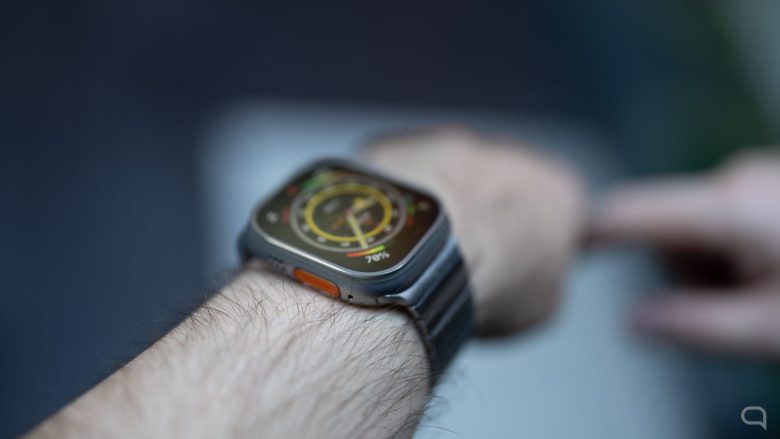
As for the bands, all those designed for the large model of the Apple Watch, regardless of case size, work with the Ultra. I’ve been using it with a stainless steel one that was sold alongside the original model, the Series 0, released in 2015. It looks fantastic.
Titanium in that natural color pairs nicely with some light-toned metal straps. I also think it works well with the dark fluoroelastomer sportswear, as it is opaque and subtly contrasts the glow on the case.
But the reality is that the Apple Watch Ultra is designed to withstand much more extreme temperatures than any regular Apple Watch, between -20º to 55º Celsius.
Along with the Watch Ultra, Apple has put up for sale three new straps specially designed for sports: the Alpine Loop, Loop Trail, and Ocean.
As its name suggests, the Loop Trail is specially designed for outdoor activities such as running, marathons, or triathlons. The Loop Alpine, in orange, is superlight and made from two layers of seamlessly interlocked fabric. The Ocean is made of fluoroelastomer with a tubular structure specially designed for diving activities.
In all three cases, they are instrumental and pretty but quite striking due to their color, predominantly yellow or orange. There are blue and white versions of the Ocean, the Loop Trail is also available in black, which is much more understated, and the Loop Alpine is available in green and white for those who don’t like orange.
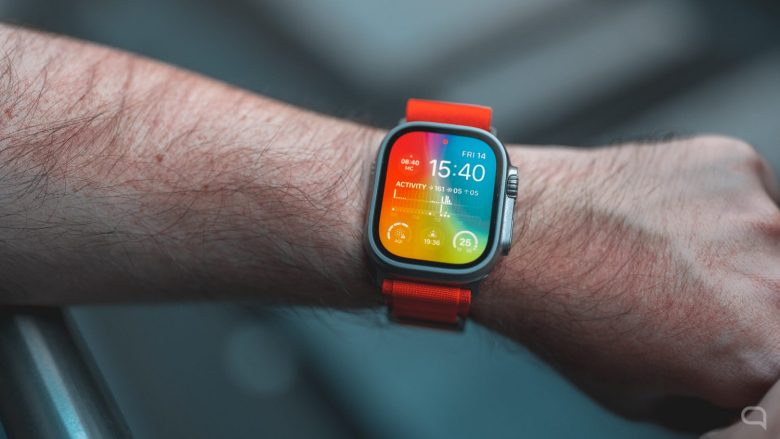
A computer on the wrist
After days of using the Apple Watch Ultra, regardless of the sports-oriented utility, I realize that the relationship with such a personal device changes when having a screen of that size on the wrist.
It feels a little less like an accessory and a little more like an (increasingly) powerful computer, with more utilities and a little more flexibility to interact with apps, complications, and other elements in the smartwatch.
Typing on that mini keyboard is more comfortable to respond quickly; floating notifications take up less space as there is more screen. Complications have more room to display more information; therefore, the interactions are different and, in certain situations, more practical.
More screen gives more possibilities. Apple has tried to take advantage of it with a new complication that simultaneously displays a good amount of information. Some native clock apps provide more information, but that’s half the way. We have to wait for developers of apps for the Apple Watch to adapt their software to the Ultra screen.
As is often the case with other technological products, the potential will be realized months after its launch once developers —and Apple itself— can refine their apps for the Apple Watch Ultra.
Another added benefit of the new size is that the audio quality of calls made from the Ultra has significantly improved. There is a big difference between a regular Apple Watch and this one, both on the speaker and microphone.
Before, if I were forced to take a call from the Watch, the person on the other end would notice. Now my voice is heard very well, and I hear much better.
The Apple Watch’s speaker is considerably louder, which isn’t surprising considering its size. It also vibrates a lot more. It is good and bad at the same time. I’m more aware of notifications, but so are the people around me, and I don’t love that.
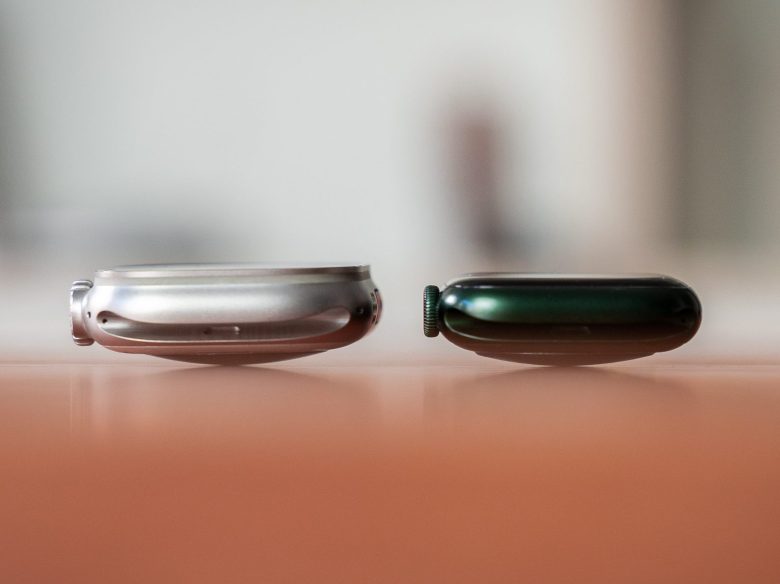
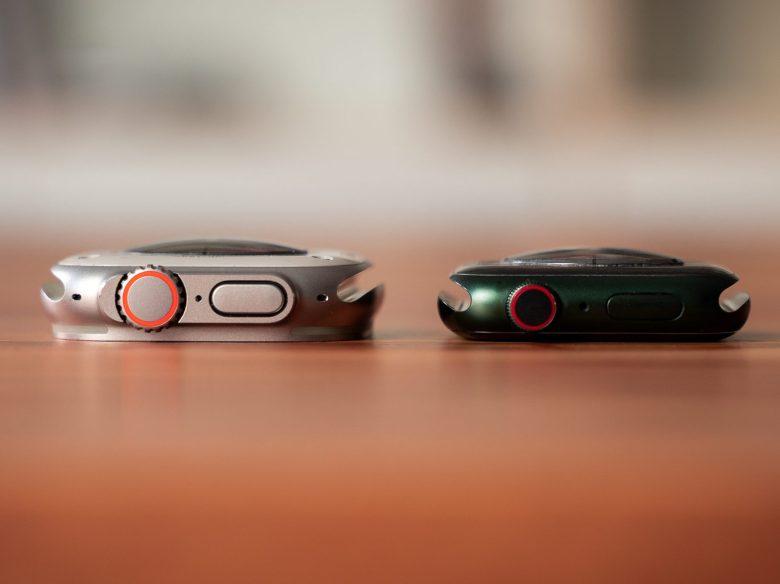

the eternal battery
The autonomy of the Apple Watch Ultra is probably the main reason many people will upgrade to this smartwatch, regardless of whether or not they exercise.
In my tests, I could use it without charging and sleeping with it from Saturday at 10:00 a.m. to Monday at 9:00 p.m. That is three full days and two nights. Awesome. It is almost three times more than any average Apple Watch. That’s essentially the reason for the Ultra’s large size.
But beyond that, there’s an interesting issue—seldom mentioned or not apparent—with using a smartwatch with so much battery life—just knowing that I can do anything, working out or not, and that the battery will never be an issue. In the past, if I forgot to charge my Apple Watch and I knew that I had to do sports that day, I needed to find a charger.
That with the Apple Watch Ultra is not a problem. I have been out exercising with 20% battery, and it was not a concern, not an issue. I finished my session, went to have a coffee, and returned home without receiving notice to charge the Watch.
Once I got home, I went to shower, and while doing it, I put the Apple Watch Ultra to charge, which was more than enough thanks to the fast charge.
Apple has accustomed me to a routine of charging the Watch when I take a shower before leaving for work. Especially now that I use it while I sleep to measure sleep. I used to do that daily, but now with the Ultra, I sometimes take it off in the morning and forget to charge it, no problem.
I can’t help but think that this is Apple’s new great challenge for future Apple Watch models: to extend the device’s autonomy to worry less and less about the charging process, no matter how fast it is.
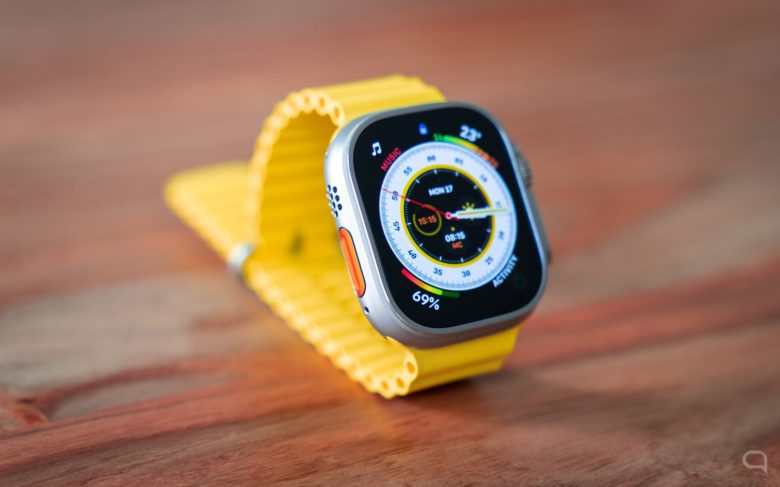
Activities
No. I have not yet jumped with a parachute or run a triathlon, nor have I gone scuba diving. Nor have I crossed the Atacama desert alone and without coverage, as Peter Gabriel did in the 80s to find inspiration and compose the soundtrack for The Last Temptation of Christ.
I have maintained my exercise regimen, but this time, using the Apple Watch Ultra. I had questions like: is it more uncomfortable to do certain activities with a more significant device? Is it more exact? How does it affect the autonomy of the smartwatch?
So far, having a more oversized watch on my wrist for my activities and exercises has not been a problem. There is also not necessarily a difference in accuracy when measuring calorie consumption if I compare it with a Series 8 or a Series 7.
But there is a notable difference if you exercise outdoors: the high-precision dual-frequency GPS calculates distances, pace, and routes more accurately. Owners of a “regular” Apple Watch who upgrade to the Ultra will notice it on the streets and maps.
There’s also a new sensor that I haven’t had a chance to test (yet). The depth gauge measures the underwater depth in real-time up to 40 meters. It is also capable of measuring the temperature of the water and, of course, recording it.
The 40 meters are not a coincidence; this is the maximum depth for recreational diving, which most people do. Those who dive deeper probably aren’t interested in a device like this for measuring.
There are also two notable differences when exercising. The first has to do with the dedicated button for activities. It’s on the left side of the Apple Watch Ultra, with an international orange color. It is the color used by the aerospace industry for, for example, the pressurized suits worn by astronauts.
By pressing it, you are on the activities screen; you choose which one you will start and go ahead. No more. It is a detail, without a doubt. But it is one less step when starting your activities.
The other difference is, again, the battery. The possibility of starting and ending exercise sessions, even if they are long, and then having two more days of autonomy. It generates an extra layer of peace of mind around the use of the device.
In the past, if, for example, you went for a run at night, you had to charge the Watch when you got home. Now I don’t even care about it. Did I charge? Didn’t charge? I know that I will be able to sleep with the Watch on and have enough autonomy for the next day.
Like the Apple Watch Series 8, the Apple Watch Ultra has a temperature sensor. It does not work to diagnose diseases; the company does not consider it a medical function, as is the sensor to perform an electrocardiogram.
But it works for an activity that we all do daily: sleep. After five days of calibration, the Apple Watch Ultra measures it with an accuracy of 0.1º Celsius every five seconds. Part of why it is done at night is that the measurement is more accurate when you are at rest because the veins dilate, increasing blood circulation.
Although it is not a medical measurement, seeing significant changes in temperature while we sleep can indicate changes in the body due to increased exercise, jet lag, alcohol consumption, and even possible diseases.
Apple has explained that part of the reason temperature recording should not be considered a medical measurement is the physical limitations behind measuring it close to the skin. Perhaps in the future other company devices, such as AirPods, will be capable of making much more accurate measurements.
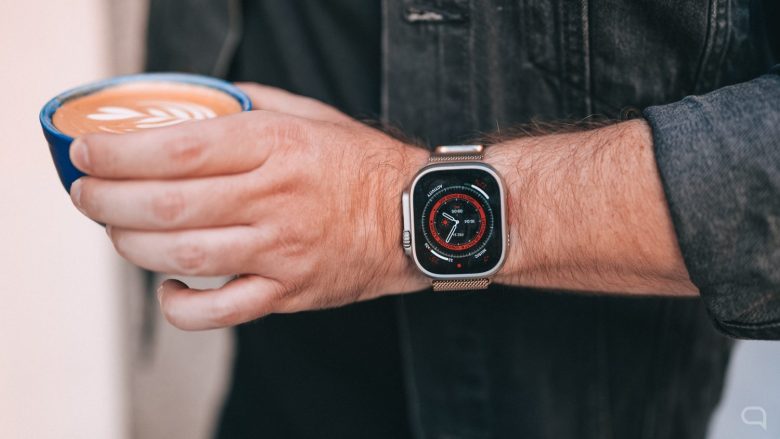
Should you buy an Apple Watch Ultra?
The Apple Watch Ultra is priced at €999 or $799. It is not a cheap product. Due to size, features, materials, and autonomy, it is easy to justify its price. But the purchase decision should be closely related to the uses you can give the device.
Whether you exercise or not, I find the Apple Watch Ultra a great device that has made me reevaluate my relationship with wearable technology. From a purely technological point of view, it is a true marvel.
But it’s not for everyone. That’s why Apple offers different types of watches for different types of use. I’m sure the Apple Watch Series 8 or Apple Watch SE will be more than enough for many people reading this review. For me, it has been for seven years in a row.
But I agree that I don’t see myself returning to an Apple Watch with a smaller screen or less battery life. The Apple Watch Ultra has become my everyday smartwatch, reflecting the product’s versatility.
